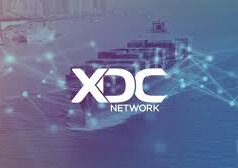Blockchain technology has been a cornerstone of the digital revolution, powering cryptocurrencies like Bitcoin, enabling smart contracts on Ethereum, and driving innovations in decentralized finance (DeFi), supply chain transparency, and more. Since Bitcoin’s inception in 2009, blockchain has promised security, immutability, and decentralization—qualities that have reshaped industries and challenged traditional systems. But as technology evolves at a breakneck pace, a pressing question looms: Will something else replace blockchain, and if so, what could it be?
In this blog post, we’ll explore the strengths and limitations of blockchain, examine emerging technologies that could challenge its dominance, and speculate on what might come next in the quest for decentralized, trustless systems.
The Strengths of Blockchain: Why It’s Here to Stay (For Now)
Blockchain’s appeal lies in its core features:
- Decentralization: By distributing data across a network of nodes, blockchain eliminates single points of failure and reduces reliance on centralized authorities.
- Immutability: Once data is recorded on a blockchain, it’s nearly impossible to alter, ensuring trust and transparency.
- Security: Cryptographic techniques like hashing and consensus mechanisms (e.g., Proof of Work or Proof of Stake) protect against tampering.
- Transparency: Public blockchains allow anyone to verify transactions, fostering accountability.
These qualities have made blockchain the backbone of cryptocurrencies, with Bitcoin’s market cap exceeding $2.3 trillion as of July 2025 and Ethereum powering a DeFi ecosystem worth over $300 billion. Beyond finance, blockchains like Solana, Polygon, and Cardano support applications in gaming, NFTs, and decentralized physical infrastructure networks (DePIN), such as Aethir’s GPU cloud computing platform.
Yet, blockchain isn’t flawless. Its limitations—scalability, energy consumption, and complexity—have sparked discussions about whether a better alternative could emerge. Posts on X reflect this sentiment, with users like @CryptoFuturist questioning whether blockchain’s slow transaction speeds and high costs could pave the way for a successor.
Blockchain’s Challenges: The Case for a Replacement
Despite its strengths, blockchain faces significant hurdles that could open the door to alternative technologies:
- Scalability: Most blockchains struggle with transaction throughput. Bitcoin processes 7 transactions per second (TPS), while Ethereum averages ~15-30 TPS. Even newer chains like Solana (65,000 TPS) face congestion during peak demand.
- Energy Consumption: Proof-of-Work blockchains like Bitcoin consume vast amounts of energy—Bitcoin’s annual electricity usage rivals that of small countries, drawing criticism for environmental impact.
- Complexity and Usability: Blockchain’s steep learning curve and technical barriers deter mainstream adoption. Wallet management, private keys, and gas fees remain daunting for non-tech-savvy users.
- Cost: High transaction fees on networks like Ethereum (despite Layer 2 solutions) and network congestion can make blockchain impractical for microtransactions or mass-scale applications.
- Regulatory Uncertainty: Governments worldwide are still grappling with how to regulate blockchain-based systems, creating uncertainty for developers and users.
These challenges have fueled speculation about technologies that could address blockchain’s shortcomings while preserving or enhancing its benefits. Let’s explore the leading contenders.
Potential Blockchain Replacements: What Could Come Next?
Several emerging technologies show promise as potential successors or complements to blockchain. While none have fully displaced it, they address specific pain points and could reshape the decentralized landscape.
1. Directed Acyclic Graphs (DAGs)
What is it?
A Directed Acyclic Graph (DAG) is a data structure that allows transactions to be processed in a graph-like format rather than a linear chain. Unlike blockchain, where transactions are grouped into blocks and added sequentially, DAGs enable parallel processing, potentially offering higher scalability and lower costs.Key Examples:
- IOTA: Designed for the Internet of Things (IoT), IOTA’s Tangle allows feeless transactions and scales with network activity. Each new transaction confirms two previous ones, eliminating the need for miners.
- Hedera Hashgraph: Uses a gossip-based consensus mechanism to achieve high throughput (~10,000 TPS) and low latency, making it suitable for enterprise applications.
Why It Could Replace Blockchain:
DAGs offer superior scalability and lower energy consumption. IOTA’s feeless model, for instance, is ideal for microtransactions in IoT ecosystems, such as machine-to-machine payments. Hedera’s enterprise focus and partnerships with companies like IBM and Boeing suggest it could dominate in sectors where blockchain’s costs are prohibitive.Limitations:
DAGs are less battle-tested than blockchain, with smaller ecosystems and fewer decentralized applications (dApps). Security concerns, such as vulnerability to double-spending in smaller networks, also remain. X posts from users like @TechBit highlight skepticism about DAGs’ ability to match blockchain’s proven security for high-stakes applications like finance.
2. Distributed Ledger Technologies (DLTs) with Alternative Consensus
What is it?
While blockchain is a type of DLT, other ledger architectures use different consensus mechanisms to achieve decentralization without the linear block structure. These systems prioritize speed, efficiency, or privacy over blockchain’s traditional design.
Key Examples:
- Ripple (XRP Ledger): Uses a Unique Node List (UNL) consensus model, enabling fast, low-cost cross-border payments. The XRP Ledger processes ~1,500 TPS with minimal energy use.
- Stellar: Similar to Ripple, Stellar’s consensus protocol supports fast, low-cost transactions for financial inclusion and remittance use cases.
Why It Could Replace Blockchain:
These DLTs excel in specific use cases, particularly cross-border payments and financial services, where speed and cost are critical. Ripple’s partnerships with banks and Stellar’s focus on underserved markets demonstrate real-world applicability.
Limitations:
Many alternative DLTs sacrifice decentralization for performance, relying on trusted nodes or centralized validators. This trade-off makes them less appealing for applications requiring full decentralization, such as DeFi or censorship-resistant systems.
3. Holochain
What is it?
Holochain is a framework for building decentralized applications that moves away from global consensus. Instead of a single shared ledger, each participant maintains their own “chain” of data, validated by a small group of peers. This agent-centric model prioritizes scalability and user autonomy.
Why It Could Replace Blockchain:
Holochain eliminates the need for energy-intensive global consensus, enabling near-infinite scalability and lower costs. It’s ideal for applications like social networks, supply chains, or peer-to-peer marketplaces, where users want control over their data. The Holo network, powered by Holochain, is already exploring use cases in decentralized hosting and data storage.
Limitations:
Holochain’s niche focus and lack of a unified ledger make it less suited for applications requiring global state, like cryptocurrencies. Its ecosystem is still developing, and adoption lags behind blockchain giants like Ethereum.
4. Quantum Ledger Technologies
What is it?
Quantum ledger technologies leverage quantum computing principles to enhance security and efficiency. Projects like Quantum Resistant Ledger (QRL) use quantum-resistant cryptography to future-proof decentralized systems against quantum computing threats, which could potentially break blockchain’s cryptographic foundations (e.g., SHA-256 or ECDSA).
Why It Could Replace Blockchain:
As quantum computing advances, traditional blockchains may become vulnerable to attacks that compromise private keys or consensus mechanisms. Quantum ledgers offer a solution by adopting post-quantum cryptography, ensuring long-term security. QRL, for instance, uses hash-based signatures to protect against quantum threats.
Limitations:
Quantum computing is still in its infancy, and practical, scalable quantum ledgers are years away. Current blockchain networks are actively researching quantum-resistant upgrades, which could negate the need for a full replacement.
5. Federated or Hybrid Systems
What is it?
Federated systems combine elements of centralized and decentralized architectures, using trusted nodes or consortiums to manage data while maintaining some level of distribution. Examples include Hyperledger Fabric and Corda, which are popular in enterprise settings for supply chain, healthcare, and finance applications.
Why It Could Replace Blockchain:
Federated systems offer scalability, privacy, and regulatory compliance, making them attractive for businesses wary of public blockchains’ transparency. Hyperledger’s modular architecture allows customization, while Corda’s focus on private transactions suits industries with strict data regulations.
Limitations:
These systems sacrifice decentralization, making them unsuitable for trustless applications like Bitcoin or DeFi. They cater primarily to enterprise needs, limiting their appeal to the broader crypto community.
Could These Technologies Coexist with Blockchain?
Rather than outright replacing blockchain, many of these technologies may complement it. For example:
- Layer 2 Solutions: Technologies like Ethereum’s rollups (Optimism, Arbitrum) and Bitcoin’s Lightning Network address scalability without abandoning blockchain’s core principles.
- Interoperability Protocols: Projects like Polkadot and Cosmos enable blockchains to communicate, creating a hybrid ecosystem where DAGs, DLTs, and blockchains coexist.
- Niche Specialization: Holochain may dominate decentralized social platforms, while DAGs like IOTA excel in IoT, leaving blockchain as the go-to for finance and smart contracts.
X users like
@Web3Visionary argue that blockchain’s entrenched infrastructure—$3.5 trillion in crypto market cap, thousands of dApps, and institutional adoption—makes a full replacement unlikely in the near term. Instead, we may see a “multi-ledger future” where different technologies serve specific use cases.
What Would a Blockchain Replacement Look Like?
A true blockchain successor would need to address its key limitations while retaining or improving its strengths. The ideal candidate would likely feature:
- High Scalability: Capable of millions of TPS to support global adoption.
- Energy Efficiency: Minimal environmental impact, unlike Proof-of-Work systems.
- User-Friendliness: Simplified interfaces and seamless integration with everyday applications.
- Quantum Resistance: Security against future quantum computing threats.
- Decentralization: Maintaining trustlessness and censorship resistance without compromising performance.
No single technology fully meets these criteria yet, but ongoing research in areas like zero-knowledge proofs, sharding, and AI-driven consensus could pave the way. For instance, zk-SNARKs (used in Zcash and Ethereum Layer 2s) enable private, scalable transactions, while AI-optimized consensus could dynamically adjust network parameters for efficiency.
The Road Ahead: Evolution or Revolution?
Blockchain’s dominance is rooted in its first-mover advantage, robust security, and growing ecosystem. With over 20,000 cryptocurrencies, $158 billion in Bitcoin ETF assets, and platforms like Pump.fun driving meme coin innovation on Solana, blockchain remains deeply entrenched. However, its limitations are undeniable, and emerging technologies like DAGs, Holochain, and quantum ledgers are gaining traction.
Rather than a single technology replacing blockchain, we’re likely to see an evolution where blockchain adapts (e.g., Ethereum’s shift to Proof of Stake) and coexists with specialized alternatives. The crypto community on X is abuzz with speculation, with users like @DeFiDreamer predicting that “blockchain will evolve, not vanish,” while others, like @NextGenTech, bet on DAGs as the future for IoT and microtransactions.
Conclusion: The Future is Decentralized, Not Defined
Blockchain has transformed how we think about trust, ownership, and value transfer, but it’s not the final chapter in decentralized technology. DAGs, Holochain, quantum ledgers, and federated systems each offer compelling solutions to blockchain’s challenges, potentially carving out niches or even overtaking it in specific domains. However, blockchain’s robust infrastructure and widespread adoption make a complete replacement unlikely in the near future.
For now, the focus should be on experimentation and interoperability. Developers, investors, and enthusiasts can stay informed through platforms like grok.com or x.com, where real-time discussions and insights shape the narrative around blockchain’s evolution. As technology advances, the question isn’t whether blockchain will be replaced, but how it will adapt to a decentralized future where multiple solutions thrive.




























Nothing is doomed. But interesting takes anyway
Read a little about IOTA in the past. Thought it was dead on arrival. Maybe there’s something to it afterall